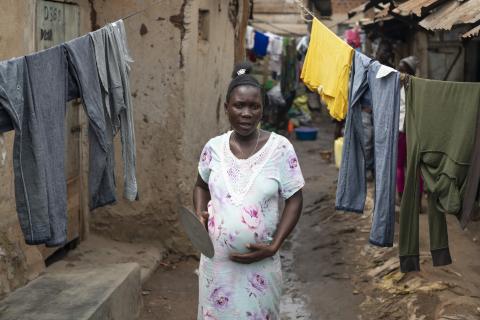Effect of heat stress in the first 1000 days of life on foetal and infant growth
This is a summary of the following paper: Bonell A, Vicedo-Cabrera AM, Moirano G et al (2024) Effect of heat stress in the first 1000 days of life on foetal and infant growth: A secondary analysis of the ENID randomised controlled trial. The Lancet Planetary Health, 8(10), e734-e743. https://doi.org/10.1016/S2542-5196(24)00208-0
This study investigates the impact of heat stress on foetal and infant growth within the first 1000 days of life, a critical window for development. Prior research indicates that extreme heat exposure negatively impacts pregnancy outcomes, but longitudinal studies on its effects on early childhood growth are limited.
This study, using data from the Early Nutrition and Immunity Development (ENID) randomised controlled trial conducted in rural areas of the Gambia between 2010 and 2015, addresses the gap by examining the relationship between heat stress, nutritional supplementation, and child growth. A total of 875 pregnant women were enrolled and randomly assigned to one of four supplementation groups from 20 weeks of gestation until delivery: (1) standard care (iron and folate), (2) multiple micronutrients, (3) protein-energy supplementation, and (4) a combination of multiple micronutrients and protein-energy. Infant anthropometric measurements (weight, length, and head circumference) were recorded at birth and periodically up to two years of age. Heat stress was measured using the universal thermal climate index (UTCI), which integrates temperature, humidity, wind speed, and solar radiation. Statistical analysis involved multivariable linear regression models to assess the impact of heat stress on foetal and infant growth. The study also explored whether nutritional supplementation modified the effects of heat stress.
In the prenatal period, a 1°C increase in mean daily maximum UTCI during the first trimester was associated with a small reduction in weight-for-gestational age z-score (WGAZ). No associations with any of the outcomes were found in the second trimester. In the third trimester, a small increase in head-circumference-for-gestational age z-score was observed with each 1°C increase. Protein-energy supplementation in the third trimester worsened the impact of heat stress on WGAZ. Postnatally, infants aged 6-18 months were the most vulnerable to the effects of heat stress, showing the largest reductions in weight-for-length z-score (WLZ) and weight-for-age z-score (WAZ) with each 1°C increase in mean daily maximum UTCI. At 12 months, exposure to a mean daily UTCI of 30°C, compared to 25°C, resulted in reductions in WLZ and WAZ. No consistent association was found between short-term heat stress and length-for-age z-score (LAZ), suggesting that short-term heat exposure mainly affects weight rather than height. However, there was evidence to suggest a six-month-old infant with a lifetime exposure of 25°C versus 30°C UTCI had an increased LAZ.
Overall, the findings suggest that heat stress negatively impacts foetal and infant growth, particularly weight gain in contexts with high rates of undernutrition. The first trimester is a particularly vulnerable period. The negative impact of protein-energy supplementation in the third trimester suggests that increased maternal metabolic heat production might amplify heat stress effects, although the findings are complex and warrant further investigation. The study highlights climate change as a growing threat to child health, especially in vulnerable populations in sub-Saharan Africa, where undernutrition rates are already high. Given the projected increase in global temperatures, interventions are needed to mitigate the effects of heat stress.


